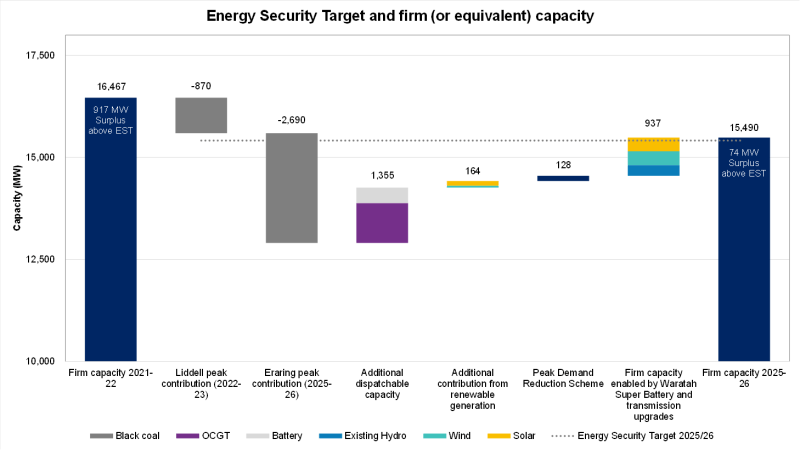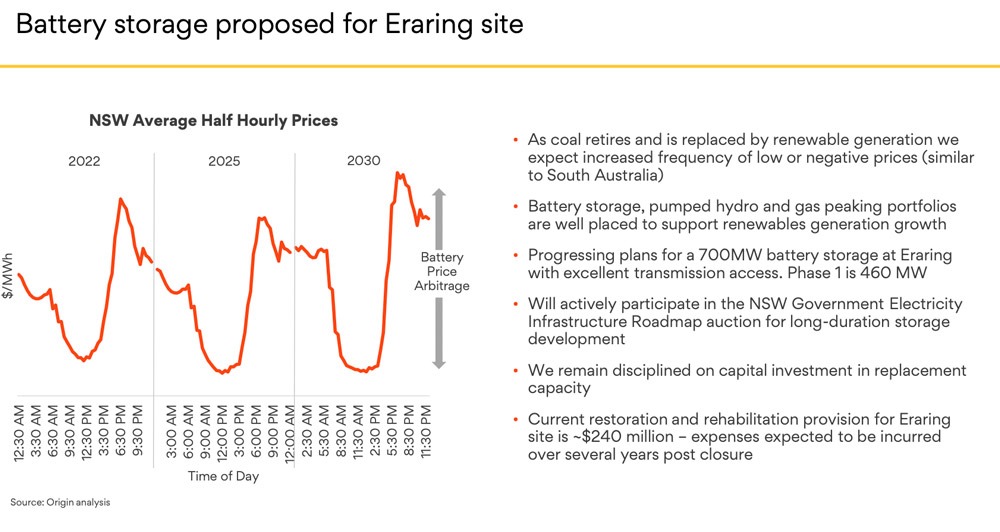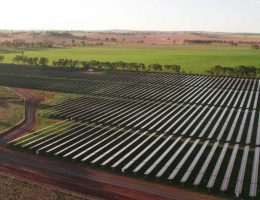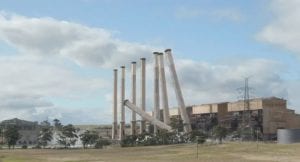New South Wales energy minister Matt Kean has assured consumers the state will continue to enjoy reliable and affordable electricity after Origin Energy’s early closure of the Eraring coal power station, and has committed the government to build a massive new “super battery” on the Central Coast.
Reacting to Origin Energy’s announcement on Thursday, Kean said he was disappointed that the Eraring plant would close early, given the impact on its workforce, but stressed that sufficient new generation capacity would be constructed in time to maintain reliable supplies.
“I am disappointed by today’s announcement and this is a difficult day for the Lake Macquarie community,” Kean said.
“The planned closure of Eraring is especially tough for its workers, their families and local communities, many of whom have helped power NSW for decades and my expectation is that Origin does the right thing by its workers.
“Origin raised the possibility of this closure a number of months ago and, with advice from the Australian Energy Market Operator (AEMO), we have developed a comprehensive plan to ensure that NSW has reliable and affordable electricity.”
Kean announced that in response to the early closure of Eraring, the NSW government would support the construction of an additional big battery on the Central Coast, the Waratah Super Battery, with 700MW/1400MWh of storage capacity that is expected to come online by 2025.
The battery forms part of a response that includes accelerating investment in new transmission network infrastructure and to manage the supply of power from the state’s Renewable Energy Zones, including in the Hunter-Central Coast region was this week inundated with more than $100 billion in project proposals.
“Our giant grid battery will act as a shock absorber, so that transmission capacity currently kept in reserve to handle shocks, such as lightning strikes, can be freed up to transfer energy to consumers,” Kean said.
“AEMO has advised that this additional transmission capacity will give the State’s consumers access to enough existing electricity generation to meet the Energy Security Target at the time Eraring closes.”

Two big batteries were announced for New South Wales in response to Origin’s announcement.
Kean’s announcement of the Waratah Super Battery is in addition to a commitment from Origin Energy to use the Eraring site to host an additional big battery system up to 700MW of capacity, with a 460MW first stage.
Origin Energy said that it would bring forward the closure of the Eraring power station during its half-year results announcement on Thursday, saying that it had given the Australian Energy Market Operator (AEMO) more than three years notice.
In a statement, AEMO confirmed that it also expected enough new generation capacity to be built in New South Wales over the coming years to adequately replace Eraring.
“Planned additional transmission capacity – including the announced battery – will give the state access to enough electricity generation to meet the Energy Security Target at the time Eraring closes,” AEMO CEO Daniel Westerman said.
“This announcement also reaffirms the need for timely development of transmission projects identified in the Draft 2022 Integrated System Plan.”
But in his own statement, federal energy and emissions reduction minister Angus Taylor suggested that the “early and sudden” closure of the Eraring power station “risks higher prices … and a less reliable grid.
“The early and sudden closure of this 2880MW generator will leave a considerable gap in reliable generation in the National Electricity Market, representing more than 20 per cent of NSW generation output.
“This risks higher prices, like the 85 per cent increase we saw after the closure of the Hazelwood Power Station, and a less reliable grid,” Taylor added.
“The Morrison government has been consistent and clear. On-demand reliable power such as coal, gas and pumped-hydro is needed to balance the record levels of intermittent forms of energy such as wind and solar.”
Origin Energy CEO Frank Calabria told a shareholder briefing on Thursday that he had made Angus Taylor aware of the impending announcement but added that Origin had predominantly consulted with the NSW government regarding Eraring’s closure.
Calabria said changing dynamics in the electricity market, particularly the growth of solar generation during the day, had created an unsustainable market for inflexible coal generators and that more flexible sources of supply – like big batteries – were better placed to meet the grid’s needs for dispatchable power.
Origin pointed to the intra-day variability in wholesale electricity prices, with lower prices during periods of high solar output and higher prices in the mornings and evenings, that provided an opportunity for battery projects to enter the market and take advantage of the price differences.

Shareholder advocacy group, the Australasian Centre for Corporate Responsibility (ACCR), said that Origin’s decision was recognition of the calls to shift away from coal generation, both due to its diminishing profitability and the need to cut emissions.
“Origin has done what AGL has stubbornly refused to do, by closing coal-fired power generation consistent with the goals of the Paris Agreement,” ACCR’s climate and environment director Dan Gocher said.
“Origin’s plans to install a 700MW battery at the Eraring site confirm that the future of the electricity grid will be dominated by renewables supported by batteries and pumped hydro – not gas.”
Member of the Climate Council and energy market expert, Dr Madeline Taylor, said the replacement of coal generators with renewables and battery storage needed to continue and that gas generators were not a viable alternative.
“Coal is not going to cut it anymore when we have cheap and reliable renewable energy and storage that’s already powering over a third of Australia’s largest electricity grid and providing almost 25 per cent of NSW’s power,” Dr Taylor said.
“States and territories are investing in storage technologies, and that needs to continue. It’s increased storage that we need, not more investment inexpensive electricity generation stemming from gas, which our carbon budget cannot afford and may leave us with stranded assets.”










